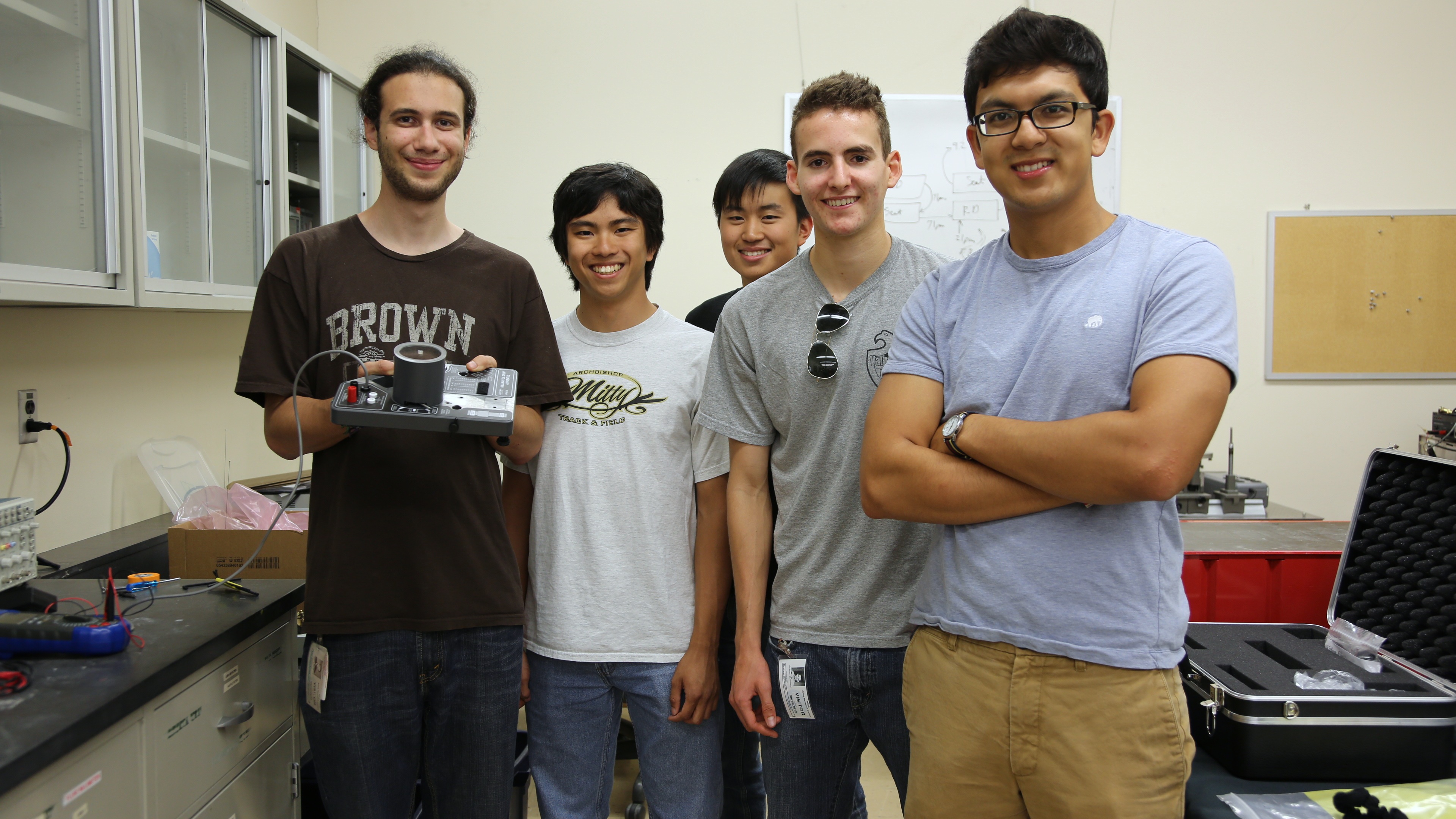Team:Stanford-Brown/VenusLife/Chamber
The Millikan Apparatus
In order to put our newly engineered organisms to the test in an aerosolized environment, the team aimed to modify a Millikan Oil Drop Apparatus into a functioning suspension chamber. Designed in 1909, the chamber was originally used by Robert Millikan and Harvey Fletcher to measure the elementary electric charge. The Apparatus is designed around a parallel pair of horizontal metal plates. Applying a potential difference across these plates creates a uniform electric field in the space between them, and thus charged droplets sprayed finely into the chamber can be made to rise and fall by altering the applied voltage.
Unfortunately, we encountered a few engineering issues while preparing for this experiment:
- The engineering of the Millikan Apparatus viewing scope to excite and detect fluorescence was impractical and challening.
- Control tests on evaporation in the chamber indicated that droplets would evaporate in under 10 minutes; a timescale too rapid for studying cell replication.
- Inconclusive evidence on whether or not the electric field would adversely affect the cells.
- Insufficient time and resources to perform the necessary (and drastic) modifications to the Apparatus that would lead to successful experiments.
We would like to thank Diana Gentry for helping us with the mechanical engineering of the suspension chamber.
However, we successfully created cell-growth dependent promoters that function as remote biosensors; while our efforts in mechanical engineering were not so fruitful, the synthetic biology component was successful!
 "
"
